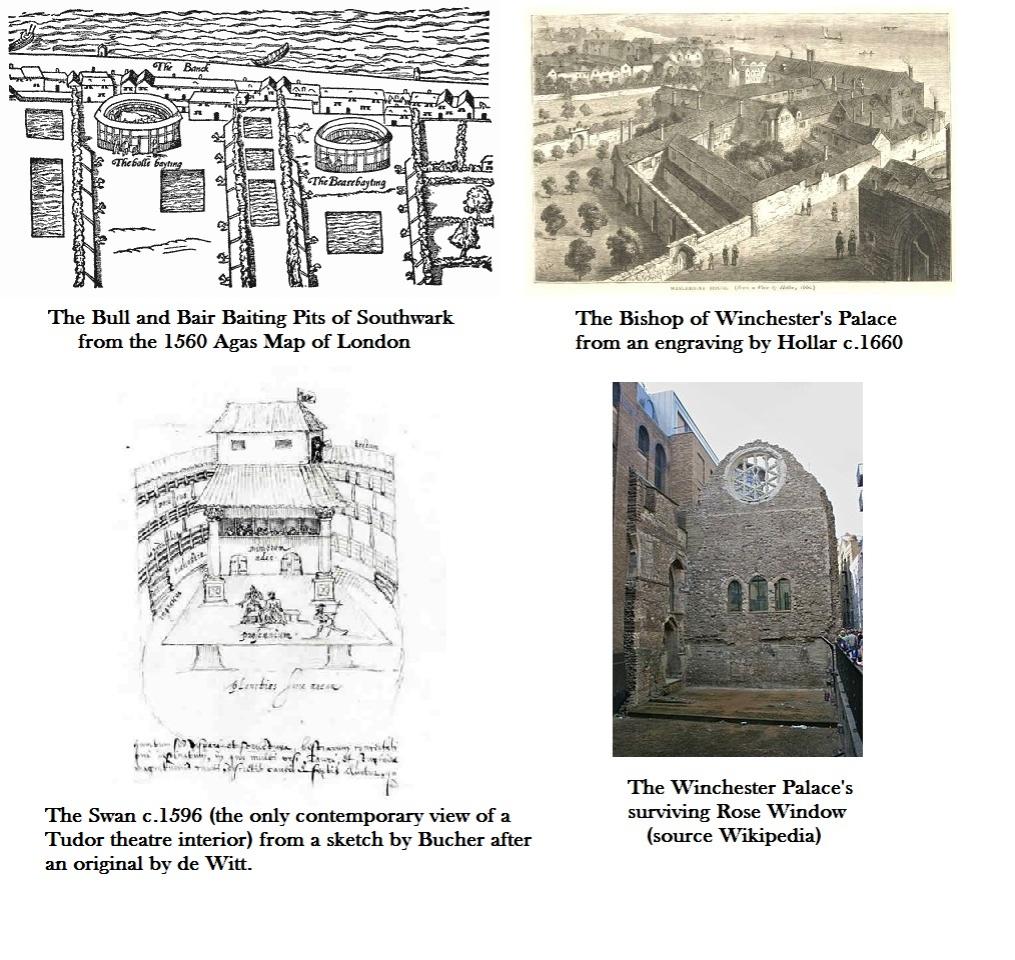BISHOPS, BEARS & BROTHELS – THE SHAMEFUL HISTORY OF SOUTHWARK
During the Middle Ages and Early Modern periods, ‘The Liberty of the Clink’ was an area of Southwark that was not subject to the king’s laws. Being beyond the reach of His (or Her) Majesty’s constables meant that many of the vices forbidden in London and Westminster could be enjoyed in Southwark so how did this medieval ‘Sin City’ come into being?
- 1149 - King Stephen’s brother Henry of Blois, who was also Bishop of Winchester, purchased Bermondsey Abbey in Southwark for his London residence. As was customary with church property, the abbey was granted its ‘liberty’ so Henry was free to make his own laws and enforce them.
- 1151 – Henry builds the notorious gaol, known as ‘The Clink’ in the grounds of his palace. Though originally intended for common criminals, during the Tudor period heretics were often confined in The Clink but by the 18th Century it had reverted to the more secular role of debtors’ prison. In 1780 the building was burned to the ground during the Gordon Riots and never rebuilt but the word ‘clink’ has passed into English as a slang term for all prisons.
- 1161 – despite being a bishop, Henry grants licenses for some of Southwark’s ‘stews’ (bath houses), to be used as brothels. Prostitutes soon became known as ‘Winchester Geese’ and the nasty rashes caused by venereal disease were called ‘goose bumps’!
- 1370 – during Bishop William of Wykeham’s tenure, the palace’s great hall is enlarged and decorated with a fine rose window. By the end of the 15th Century Winchester Palace includes a brewery and a butchery, two courtyards, formal gardens, a tennis court and even a bowling alley!
- 1503 – at the dawn of the Tudor Age, Henry VII closes Southwark’s brothels.
- 1519 - despite his later (and somewhat misplaced) reputation for decadence, Henry VIII orders Cardinal Wolsey to purge London and Southwark of all brothels, gaming houses, bear baiting pits, cock fighting pits and bullrings.
- 1546 – in one of his last acts before his death, in 1547, Henry VIII again orders the brothels and bear pits of Southwark to be closed but the ban is repealed by Edward VI a few years later.
- 1573 - Elizabeth I appoints Ralph Bowes as ‘Master of Her Majesty's Game at the Paris Garden’, one of Southwark most popular bear pits. Though Elizabeth frowned on brothels she was known to be fond of bull and bear baiting.
- 1578, William Fleetwood, sergeant-in-law, describes the Paris Garden as: ‘a place where foreign ambassadors meet their spies and agents… at night it is so dark and obscured by trees that a man needs a cat's eyes to see…’
- 1583 - the gallery of the Paris Garden collapses, killing several spectators and injuring many others. As this disaster happens on a Sunday, Puritans claim that it’s God’s punishment for the wickedness of Southwark.
- 1587 - The Rose, the first of four purpose built theatres in Southwark, opens. The Swan, the Fortune and Shakespeare’s Globe open soon afterwards. Though there were other theatres in London, the presence of the brothels, bear pits and other forbidden pleasures ensures that Southwark’s playhouses become the most popular!
- 1666 - famous diarist Samuel Pepys visits a Southwark bear pit and describes the spectacle as ‘a rude and nasty pleasure’.
- 1649 – During the Cromwellian period, bishops were abolished and theatres closed, so the Liberty of the Clink is sold to a cloth dyer, however the property is restored to Winchester’s bishops on the restoration of Charles II.
- 1888 – the Local Government Act abolishes all ‘liberties’ and the feudal rights of the their owners.
- Today all that’s left of the bishop’s palace is the great hall’s rose window but a museum to the Clink Prison and a recreation of Shakespeare’s Globe have been built not far from the sites of the originals. Curiously, a block of ‘luxury’ student flats now carries the name of Paris Gardens!
For more guilty pleasures do take a look at my Tudor novel The Devil’s Band, read the first 1,000 words here
